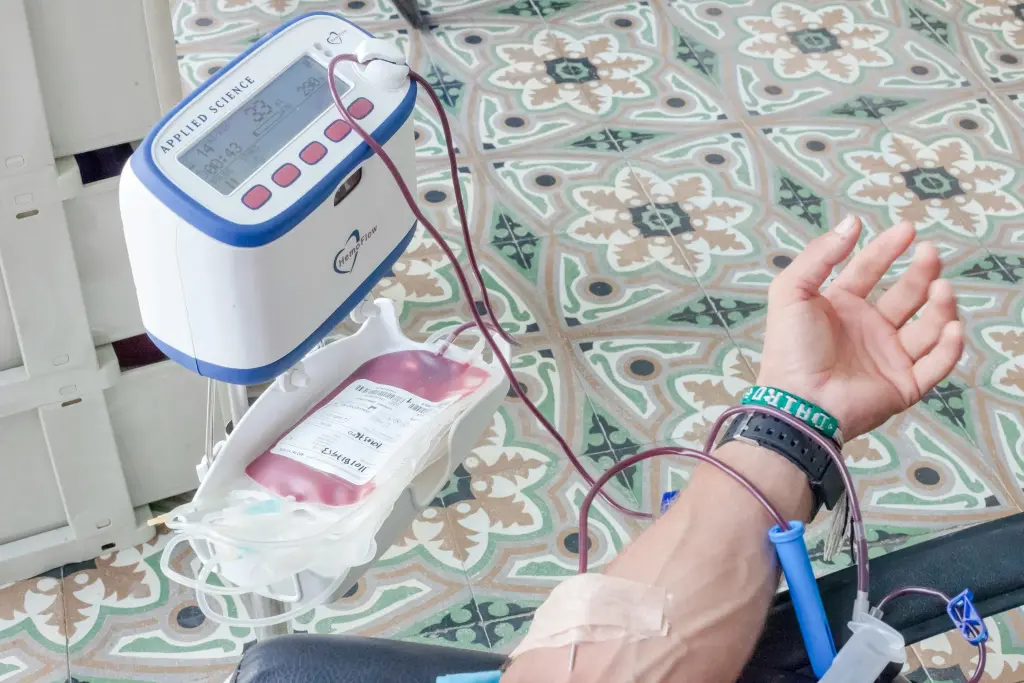Donating blood is an act of compassion and generosity that can save lives. However, many potential donors wonder about its impact on their health, especially if it could cause anemia. This article examines the relationship between blood donation and anemia, debunks myths, and provides essential tips for staying healthy as a donor.
You May Also Like: 22 of the Best Places to Visit in Asia
1. Understanding Anemia
Anemia occurs when your body lacks enough healthy red blood cells or hemoglobin to carry oxygen effectively.
- Common Symptoms: Fatigue, weakness, pale skin, and shortness of breath.
- Causes: Poor diet, chronic illnesses, or significant blood loss.
- Iron Deficiency Anemia: The most common type, often linked to inadequate iron intake or absorption.
Understanding anemia is key to addressing concerns about its connection to blood donation.
2. What Happens During Blood Donation?
When you donate blood, about 1 pint (or 500 milliliters) is collected.
- Red Blood Cell Loss: Along with plasma and platelets, your donation includes red blood cells.
- Recovery Process: The body begins replacing these cells immediately, but it can take several weeks to fully replenish iron levels.
- Eligibility Requirements: Health screenings ensure donors have enough hemoglobin and meet other criteria to donate safely.
The process is designed to prioritize the donor’s health.
3. Can Donating Blood Cause Anemia?
The short answer is no, as long as you are healthy and meet donation requirements.
- Temporary Iron Depletion: Regular blood donation can lower iron levels temporarily, but it doesn’t typically lead to anemia in healthy individuals.
- Screening Safeguards: Blood banks test hemoglobin levels before every donation. If levels are too low, you won’t be allowed to donate.
- Health Risks: Those who donate more frequently than recommended or have low iron stores may experience fatigue but not necessarily anemia.
Monitoring iron levels is key to safe and regular donations.
4. Who Is at Risk of Low Iron Levels?
Certain groups are more susceptible to low iron after donating blood.
- Frequent Donors: Those who donate every eight weeks may not have enough time to replenish iron stores.
- Women: Especially premenopausal women due to monthly blood loss.
- Vegetarians/Vegans: May have lower dietary iron intake.
- Teenagers: Growing bodies require more iron.
These groups should take extra precautions to maintain healthy iron levels.
5. How to Prevent Iron Depletion After Donating
Maintaining healthy iron levels is crucial for frequent donors.
- Consume Iron-Rich Foods: Include red meat, poultry, fish, beans, lentils, and leafy greens in your diet.
- Pair with Vitamin C: Foods like oranges, bell peppers, and tomatoes enhance iron absorption.
- Iron Supplements: Consider supplements if recommended by a healthcare provider.
- Stay Hydrated: Proper hydration helps your body recover faster.
- Spacing Donations: Follow recommended donation intervals to allow your body ample time to replenish iron.
Small lifestyle adjustments can make a big difference in recovery.
6. What Do Blood Banks Do to Ensure Safety?
Blood donation organizations prioritize donor health with strict guidelines.
- Health Screenings: Check hemoglobin levels, weight, and overall health.
- Donation Limits: Men can donate every 12 weeks and women every 16 weeks in many countries.
- Education: Provide donors with recovery tips and dietary advice.
- Follow-Up: Encourage donors to contact the center if they experience any post-donation issues.
These measures ensure a safe and rewarding donation experience.
7. Common Myths About Blood Donation and Anemia
There are many misconceptions about blood donation and anemia.
- Myth 1: Donating Blood Always Causes Anemia.
Fact: Healthy donors recover red blood cells and iron levels within weeks. - Myth 2: You Can’t Donate If You’re Low on Iron.
Fact: Low iron doesn’t always mean anemia. Screenings help identify safe donation levels. - Myth 3: Only Certain Blood Types Can Donate.
Fact: All blood types are valuable, and every donation helps save lives.
Education is essential to overcoming fears and myths.
8. Benefits of Donating Blood
Donating blood offers health benefits beyond helping others.
- Stimulates Blood Cell Production: Your body regenerates fresh red blood cells post-donation.
- Health Check: Pre-donation screenings can reveal underlying health conditions.
- Emotional Rewards: The satisfaction of saving lives contributes to mental well-being.
- Community Impact: Blood donations support hospitals and save lives in emergencies.
These benefits far outweigh temporary side effects like fatigue.
9. Signs to Watch for After Donating
It’s important to monitor how you feel after donating blood.
- Mild Symptoms: Fatigue, dizziness, or bruising at the needle site are common.
- Warning Signs: If you experience prolonged weakness, chest pain, or fainting, consult a healthcare provider.
- Recovery Time: Most people feel normal within a day or two. Staying hydrated and eating well helps speed recovery.
Listen to your body and take necessary steps for a smooth recovery.
10. Final Thoughts: Donating Blood Safely
Donating blood is a safe and impactful way to help others. For healthy individuals, it does not cause anemia. By following donation guidelines and maintaining a balanced diet, you can continue to contribute without compromising your health.
If you’re unsure about your iron levels or have concerns, consult your doctor before donating. Remember, every pint of blood you donate can save up to three lives. That’s a contribution worth making.
Spread Awareness:
Share this guide with friends and family to encourage safe blood donations and debunk myths about anemia. Together, we can make a life-saving difference!










